Common Lawn Care Mistakes to Avoid
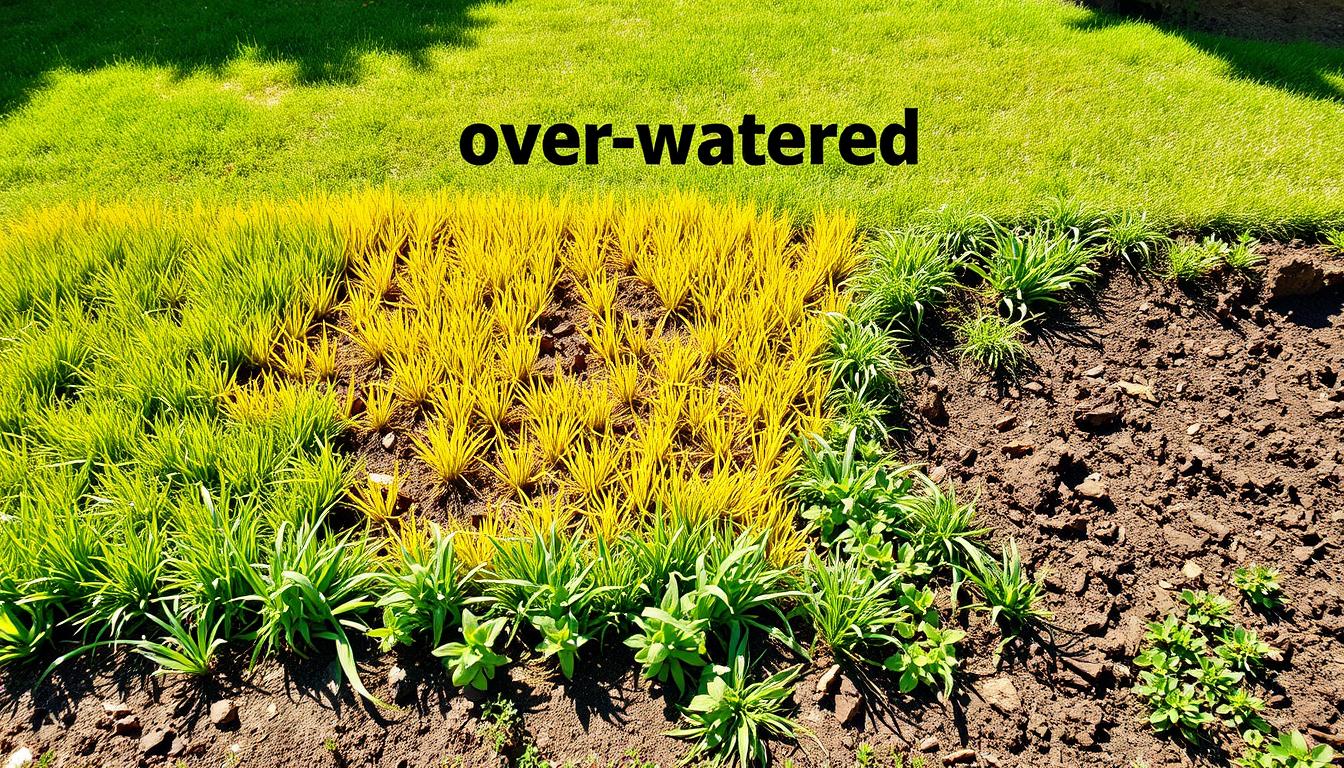
When I started my own business I made a lot of common lawn care mistakes that one can only learn once it’s already too late. So let me share my experience so you don’t do the same.
More than three out of four Americans have a lawn or tended landscape at their home, according to the National Association of Landscape Professionals.
Yet, 69% of these people say their lawn could use some improvement. And a shocking 31% don’t even know how to grow a healthy lawn.
As someone who loves lawns, I’m here to guide you through common mistakes and help you keep your outdoor space looking great.
Key Takeaways
- Mowing your lawn at the wrong height can weaken and stress the grass, making it more susceptible to weeds, pests, and diseases.
- Neglecting soil preparation and care can lead to compaction, poor drainage, and nutrient deficiencies that inhibit healthy grass growth.
- Overwatering your lawn can cause fungal diseases, shallow root growth, and weed problems.
- Using dull mower blades can tear and damage the grass, leading to a ragged, unhealthy appearance.
- Applying pesticides improperly can harm the environment and your lawn’s overall health.
Mowing at the Wrong Height
Keeping the right mowing height is key for a healthy lawn. Many homeowners cut their grass too short, which weakens the plants. Always remember the one-third rule: never cut more than a third of the grass blade length at once. Cutting too short stresses your lawn, making it more prone to weeds, pests, and diseases.
Taller grass is healthier. It shades the soil, keeps it moist, and reduces watering needs. Shaded soil also makes it harder for weeds to start. Raising your mowing height can help choke out weeds. Find the best height for your area and lawn type. For northern lawns, 3 inches is ideal. For warm climates, 1-1/2 to 2 inches works best.
The Importance of Proper Mowing Height
- Cutting grass too short adds stress to the lawn, making it prone to weed growth.
- Taller grass promotes greener lawns due to more leaf tissue for photosynthesis.
- Lawns mowed too short often appear yellowed and unhealthy.
- Taller-cut lawns shade the soil better, aiding in moisture retention and weed prevention.
It’s also important to sharpen your mower blades regularly. Dull blades tear the grass, causing discoloration and stress. Avoid mowing when the lawn is wet to prevent uneven cuts and unsightly tire tracks.
| Mowing Height Recommendation | Lawn Type |
|---|---|
| 3 inches | Northern Lawns |
| 1-1/2 to 2 inches | Warm Climate Lawns |
By following the one-third rule and mowing at the right height, you’ll have a lush, healthy lawn. For more tips, check out this article.
“Taller grass promotes greener lawns due to more leaf tissue for photosynthesis.” – Sam, author of the blog
Neglecting Soil Preparation and Care
Keeping your lawn healthy is more than just mowing and watering. Proper soil care is key, but often ignored. Foot traffic and heavy machinery can compact the soil, harming root growth and limiting oxygen and water access.
Compacted soil needs annual aeration, more so in busy areas. Aerating helps water, air, and nutrients reach the soil better. This boosts your lawn’s health and looks.
Before seeding or sodding, preparing the soil is crucial. Adding compost or organic matter improves its structure and nutrient levels. This step is vital for a strong, resilient lawn.
| Lawn Care Aspect | Importance |
|---|---|
| Soil Aeration | Alleviates soil compaction, improves water and nutrient absorption |
| Soil Preparation | Adds organic matter, enhances soil structure and nutrient content |
| Soil Testing | Identifies pH imbalances and nutrient deficiencies for targeted solutions |
Ignoring soil care can cause many problems, like poor drainage and nutrient shortages. Prioritize soil preparation and maintenance for a lush, vibrant lawn. Your neighbors will be green with envy.
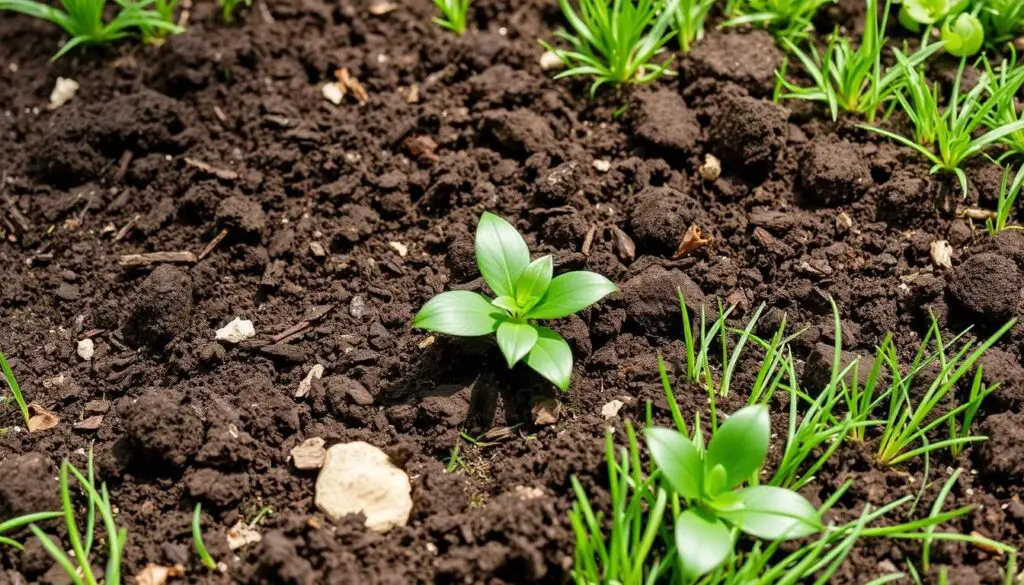
“Healthy soil is the foundation for a thriving lawn. Investing time and effort into soil preparation and care will pay dividends in the long run.” – Richard, ecology expert
Overwatering Your Lawn
Keeping your lawn healthy and lush means finding the right water balance. Grass needs about 1 inch of water each week, from rain or irrigation. Overwatering can cause problems like shallow roots and heat damage. It also encourages fungal diseases and weeds.
Optimal Watering Practices
To water your lawn right, use a rain gauge to measure weekly moisture. Aim for 1 to 1.5 inches of water. This can come from rain or your irrigation system.
Watering deeply but less often is better than shallow, frequent watering. This helps roots grow deep and strong. It makes your lawn less vulnerable to damage.
The best time to water is between 5 am and 10 am. The sun is not as strong, and evaporation is lower. Avoid watering in the late afternoon or evening. This can help prevent fungal diseases.
- Measure your lawn’s water needs with a rain gauge
- Aim for 1 to 1.5 inches of water per week
- Water deeply and infrequently, rather than lightly and frequently
- Time your watering for the early morning hours
By following these tips, you can keep your lawn healthy and green. You’ll avoid the problems of overwatering, fungal diseases, and weed problems.
“Proper watering is the key to a lush, green lawn. Overwatering can be just as detrimental as underwatering, so it’s important to find the right balance.” – Sam, lawn specialist
Using Dull Mower Blades
Keeping your mower blades sharp is key for a healthy lawn. Dull blades tear the grass, causing it to look brown and weak. This makes your lawn more likely to get sick.
Dull blades don’t cut grass cleanly. They tear it, leaving your lawn looking bad. This makes your grass more open to pests and diseases.
To keep your lawn looking great, sharpen your mower blades often. Do this every 20-25 hours of use or when the cut quality drops. Sharpen them at the start of mowing season and as needed later.
Sharpening mower blades is easy. Many stores offer this service, or you can do it yourself. Just make sure to follow the right steps to keep them balanced and aligned.
Sharp mower blades mean a healthier, more vibrant lawn. Your lawn will be less likely to get disease and look bad. So, take care of this important task and your grass will be happy!
Lawn Care Mistakes
Keeping your lawn healthy and green takes effort and avoiding common mistakes. Many people take care of their cars and skin but forget about their lawns. This neglect can cause bare spots, weeds, and diseases.
One big mistake is overwatering. Grass only needs about 1 inch of water each week. Too much water can harm the roots, cause diseases, and lead to weeds. It’s better to water deeply but less often.
- Mowing the lawn too short can weaken it, making it more susceptible to pests and diseases.
- Not sharpening mower blades can tear the grass, inviting diseases and discoloration.
- Using lawn care products at the wrong time can make them less effective.
Knowing these mistakes and fixing them can keep your lawn looking great. A lawn care plan that fits the season and grass type is key to success.
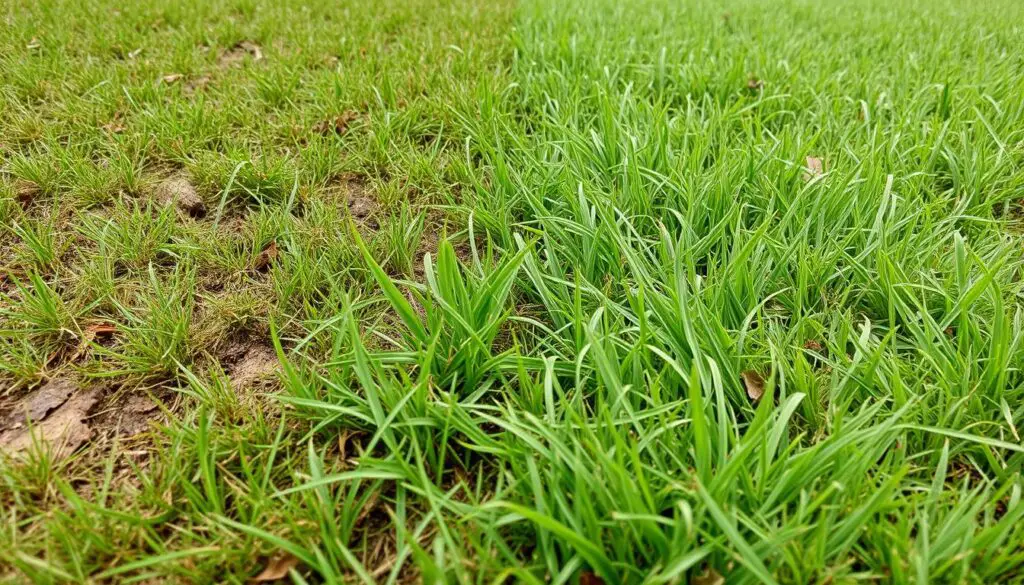
| Mistake | Impact | Solution |
|---|---|---|
| Overwatering | Shallow root growth, fungal diseases, weed problems | Deep but infrequent watering, about 1 inch per week |
| Mowing too short | Weakens and stresses the lawn, making it vulnerable to pests and diseases | Follow the one-third rule: never remove more than a third of the grass blade length |
| Dull mower blades | Shredded grass blades, leading to disease and discoloration | Sharpen mower blades annually |
| Improper timing of lawn care products | Reduced effectiveness of weed-and-feed, pre-emergent herbicides, and other treatments | Apply products at the optimal time based on the season and grass type |
By avoiding these mistakes and keeping up with lawn care, you can have a beautiful lawn. It will save you time and money in the long run.
Applying Pesticides Improperly
Using pesticides is sometimes needed to keep your lawn healthy. But, using them wrong can harm your lawn and the environment. It’s important to use pesticides carefully and with caution.
Read the Label, Apply Judiciously
Always read the pesticide label before use. These labels, approved by the Environmental Protection Agency (EPA), tell you how to use the product safely. Using the right amount and only when needed helps protect the environment.
Avoid Windy Conditions and Heavy Rains
Don’t apply pesticides on windy days or before rain. Wind can spread the chemicals, harming plants and wildlife. Rain can wash them away, causing pollution.
Spot-Treat Infested Areas
Instead of treating your whole lawn, focus on the infested spots. This method uses less chemicals and is safer for the environment. Many websites help you choose the right products for your lawn.
By following these tips, you can control pests without harming the environment. Caring for your lawn responsibly benefits both your property and the ecosystem around it.
| Pesticide Use Statistic | Value |
|---|---|
| U.S. households using pesticides | 88 million |
| Households using insecticides | 52 million |
| Annual environmental and economic costs of pesticide use in the U.S. | $10-15 billion |
| Percentage of pesticide poisoning from acute exposure | 70% |
| Percentage of farmworkers in developing countries lacking proper pesticide handling knowledge | 45-60% |
“Applying pesticides in sensitive areas like waterways may require special permits and hiring certified professionals.” – Sam, author of The Mower’s Guide
Planting the Wrong Grasses
Choosing the right grass for your lawn is key to its success. Selecting grasses that match your lawn’s conditions is vital. Planting Kentucky bluegrass or perennial ryegrass in shaded areas is a mistake. These grasses struggle with less light.
For shaded spots, fine fescues or tall fescue are better. They handle shade well. In areas with lots of foot traffic, pick grasses that can take it. If you can’t water your lawn, choose drought-resistant grasses.
Mixing different grass types can help fight pests and diseases. By choosing the right grass species for your lawn, you ensure it does well in shade tolerance and traffic tolerance.
| Grass Type | Shade Tolerance | Traffic Tolerance |
|---|---|---|
| Kentucky Bluegrass | Low | Moderate |
| Perennial Ryegrass | Low | High |
| Fine Fescues | High | Low |
| Tall Fescue | Moderate | High |
By picking the right grass species for your lawn, you can make a beautiful, lasting outdoor space.
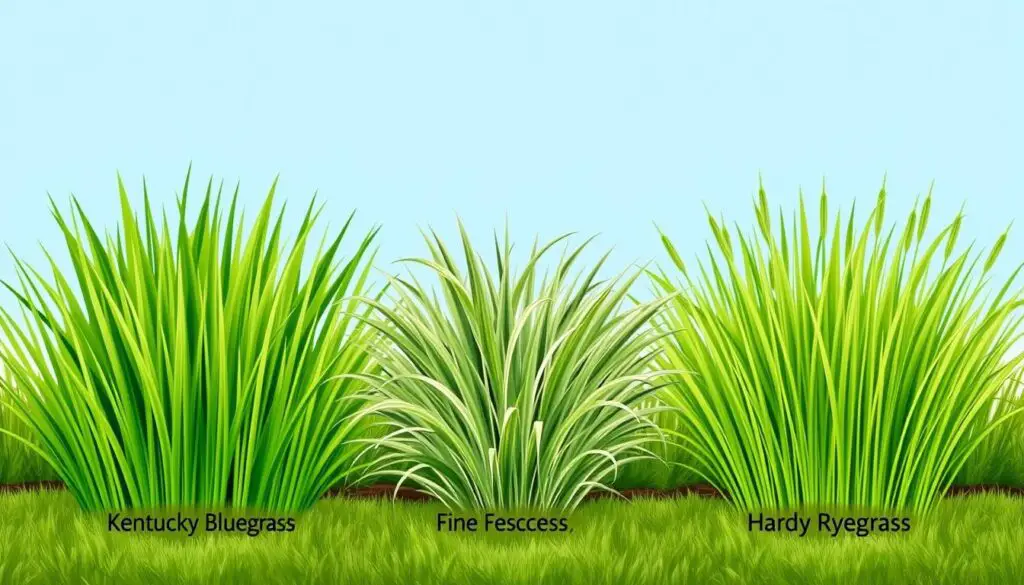
Ignoring Soil pH Levels
Keeping your lawn’s soil pH right is key for its health. Grass grows best in soil with a pH between 6 and 7.2. If the pH is off, the grass can’t use nutrients well. This makes it weak and more likely to get sick or attacked by pests.
To find out your lawn’s soil pH, you need to do a soil test. You can get this done at your local extension service or a good garden center. Once you know the pH, you can fix it.
- If the soil is too acidic, add lime to make it more alkaline.
- If it’s too alkaline, use sulfur to make it more acidic.
By keeping your soil’s pH in the right range, your grass will get the nutrients it needs. This leads to a strong, green lawn that can fight off pests and diseases.
| Soil pH Range | Recommendation |
|---|---|
| Less than 6.0 | Apply lime to raise the pH |
| 6.0 – 7.2 | Optimal pH range for healthy lawns |
| Greater than 7.2 | Apply sulfur to lower the pH |
Remember, testing your soil and adjusting its pH regularly is crucial for a healthy lawn. By understanding and managing your soil’s pH, you’ll create a beautiful outdoor space.
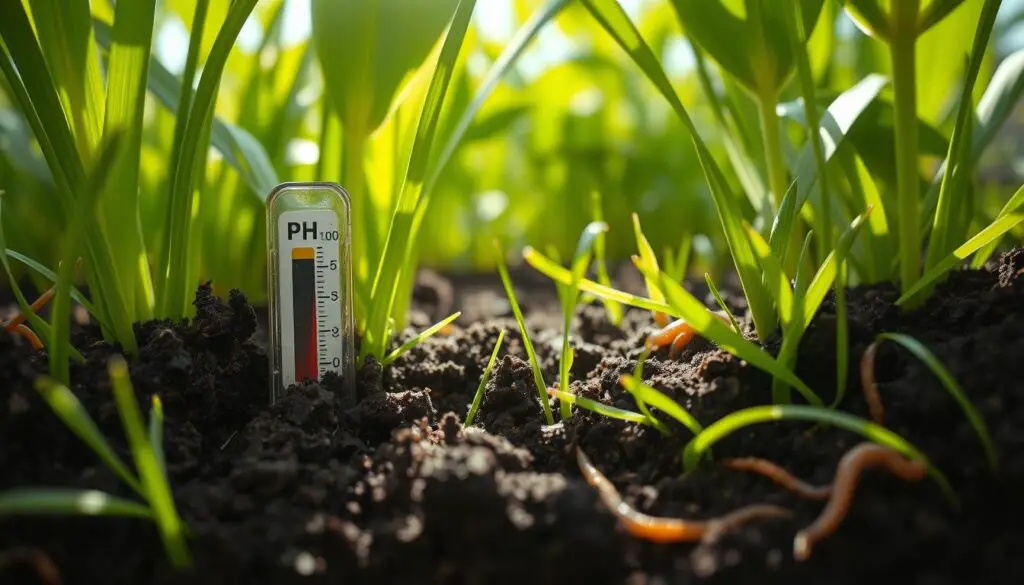
“Healthy soil is the foundation for a thriving lawn. Neglecting soil pH is like building a house on shaky ground.” – Sam, lawn expert
Fertilizing at the Wrong Time
Fertilizing at the right time is key for a healthy lawn. Cool-season grasses grow most in spring and fall. Fertilizing in summer can harm them unless you water and remove clippings often.
The best time to feed your lawn is late summer or early fall. This boosts root growth and prepares it for winter. Slow-release fertilizers are best because they give nutrients steadily without causing too much growth or runoff.
- Avoid fertilizing cool-season grasses during the summer months when they are dormant.
- Apply fertilizer in late summer or early fall to support root growth and winter hardiness.
- Choose slow-release fertilizers to ensure a steady, controlled supply of nutrients.
By matching your fertilization with grass growth cycles, your lawn gets the right nourishment. This leads to a lush, vibrant landscape all year.
Getting the timing right is just part of the job. Healthy soil, proper mowing, and pest control are also crucial. Stay alert and work with your grass’s natural cycles for a beautiful lawn.
Overusing Herbicides
Herbicides can help control weeds, but they should be used carefully. It’s not always necessary to spray the whole lawn. Instead, focus on spot-treating areas with weeds. Or, you could choose to let a few weeds grow.
Many places have rules about using herbicides at home. Using too much, like Roundup, can harm your lawn and plants. Glyphosate, which kills everything, is very dangerous.
Most people don’t measure when they spray herbicides. They might use the “glug method” instead. This can waste money and harm the environment.
- Avoid using non-selective herbicides that can harm your entire lawn
- Spot-treat areas with weeds instead of applying herbicides across the entire lawn
- Be mindful of local regulations on herbicide use by homeowners
- Consider a more relaxed approach and tolerate a few weeds in your lawn
- Hire lawn care professionals for effective and responsible weed control
“Overusing herbicides can have serious consequences for your lawn and the environment. It’s important to use them sparingly and only when necessary.” – Laura, lawn health enthusiast
Being careful with herbicides helps your lawn and the planet. A little tolerance for weeds can make your outdoor space better for the environment.
Neglecting Aeration
As a homeowner, I’ve learned the importance of regular aeration for my lawn. Aeration helps solve problems like soil compaction and thatch buildup. Compacted soil hinders root growth and limits water and nutrient access, weakening the grass.
Aerating the lawn, through mechanical means or professional services, creates holes for better soil exchange. This promotes deeper roots and a stronger lawn. I make sure to aerate my lawn annually, focusing on high-traffic areas.
Ignoring aeration can harm my lawn’s health and look. It’s a simple yet effective step that greatly improves my grass’s quality and life. Regular aeration keeps my lawn lush, green, and healthy for years.
FAQ
What are the common lawn care mistakes to avoid?
What is the one-third rule for mowing height?
How important is proper soil preparation and care?
How much water does a lawn really need?
Why is it important to keep mower blades sharp?
What are some other common lawn care mistakes to avoid?
How should pesticides be used properly?
How do I choose the right grass species for my lawn?
Why is maintaining the proper soil pH important?
When is the best time to fertilize my lawn?
How should I use herbicides in my lawn?
How often should I aerate my lawn?
Source Links
- https://www.lawnstarter.com/blog/lawn-care-2/6-lawn-care-mistakes-to-avoid/
- https://www.familyhandyman.com/list/the-20-ways-youre-doing-the-wrong-thing-for-your-lawn/
- https://reviewed.usatoday.com/home-outdoors/features/lawn-care-mistakes-youre-probably-making
- https://limbwalkertree.com/blog/5-mowing-mistakes-homeowners-make
- https://www.oasisturf.com/blog/mowing-mistakes-that-can-affect-lawn-care-program-results
- https://lawnhiro.com/blog/5-common-lawn-care-mistakes/
- https://americanpridelawncare.com/blog/common-lawn-care-mistakes-to-avoid-for-a-beautiful-lawn
- https://www.homesandgardens.com/gardens/lawn-watering-mistakes
- https://summerrainsprinklers.com/5-common-lawn-care-mistakes-and-how-to-avoid-them/
- https://seacoastturfcare.com/blog/common-lawn-mistakes-how-fix
- https://theropshop.com/rugged-u/blog/how-and-why-to-avoid-dull-mower-blades
- https://www.realsimple.com/lawn-care-mistakes-8636796
- https://www.bhg.com/gardening/yard/lawn-care/lawn-care-for-beginners/
- https://www.tomsguide.com/how-to/7-common-lawn-care-mistakes-you-are-probably-making-right-now
- https://www.canr.msu.edu/news/avoid-herbicide-misuse-at-home-things-to-know-before-you-buy

